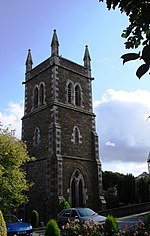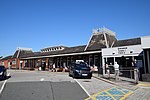Idless

Idless (Cornish: Edhelys, meaning place of aspen trees) is a hamlet north of Truro in Cornwall, England. The River Allen rises north of St Allen and flows southwards through the Idless Valley into Truro. It is in the civil parish of Kenwyn. The manor of Idless was recorded in the Domesday Book (1086) when it was held by Algar from Robert, Count of Mortain. There was one hide of land and land for 6 ploughs. Algar had one third of a virgate with 3 ploughs and 4 serfs. 4 villeins and 7 smallholders had the rest of the land. There were 40 acres of woodland, 2 square leagues of pasture, 23 sheep and 7 goats. The value of the manor was 15 shillings though it had formerly been £2 sterling.There was a military firing-range beside nearby St Clement's Wood, known as "Idless Range", just north of the present-day Penmount Crematorium, which was still in use by at least the local army cadets for Lee-Enfield live-firing in the late 1950s.
Excerpt from the Wikipedia article Idless (License: CC BY-SA 3.0, Authors, Images).Idless
Idless Lane,
Geographical coordinates (GPS) Address Nearby Places Show on map
Geographical coordinates (GPS)
| Latitude | Longitude |
|---|---|
| N 50.2869325 ° | E -5.060517 ° |
Address
Idless Lane
TR4 9DE , Kenwyn
England, United Kingdom
Open on Google Maps








